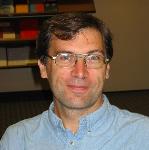


Patrice Koehl
Department of Computer Science
Genome Center
Room 4319, Genome Center, GBSF
451 East Health Sciences Drive
University of California
Davis, CA 95616
Phone: (530) 754 5121
koehl@cs.ucdavis.edu

 |

| Patrice Koehl |
Geometry and Shape Analysis in Biological Sciences (8-9 June 2017)Tutorial 2: How to describe a shape: Biological shape descriptorsVenue: IMS, National University of SingaporeOrganizers
OverviewThe problem of describing, measuring and comparing shapes arises in image processing when searching for or recognizing objects in an image or a video. This problem is now surfacing in many more disciplines that are generating increase amounts of quantitative and visual information. Biology occupies a central place among these fields of applications. In cellular biology, the measurements of cell morphology and dynamics by imaging techniques such as light or fluorescent microscopy yield large numbers of 2D and 3D images that need to be segmented and quantified. In molecular biology the common assumption that the structure (or shape) of a protein is a major determinant of its function has stimulated the development of many methods for representing, measuring and comparing protein structures. The description of a shape increases in complexity as the object departs from regularity. The objective of most scientists is not necessarily to describe such shapes completely but to identify a small set of attributes of the shape that are information-rich with respect to the problem at hand. We will explore different options for defining such attributes. Slides of the presentation
Simple Spherical Harmonics viewerThe viewer below generates at random spherical harmonics of the form:
$$r = \sin(m_0\phi)^{m_1} + \cos(m_2\phi)^{m_3} + \sin(m_4\theta)^{m_5} + \cos(m_6\theta)^{m_7}$$
where $$(r,\theta,\phi)$$ are spherical coordinates. Just press "Generate New" in the Control Panel to generate a new spherical ahrmonics, with the constants m chosen at random, as positive (possible 0) integer values. Wireframe allows you to toggle between "wireframe" and "solid" representation for the spherical harmonics. Your mouse allows you to rotate the image, and zoom in the control panel allows you to change the scale.
Resources |
| Page last modified 9 June 2017 | http://www.cs.ucdavis.edu/~koehl/ |